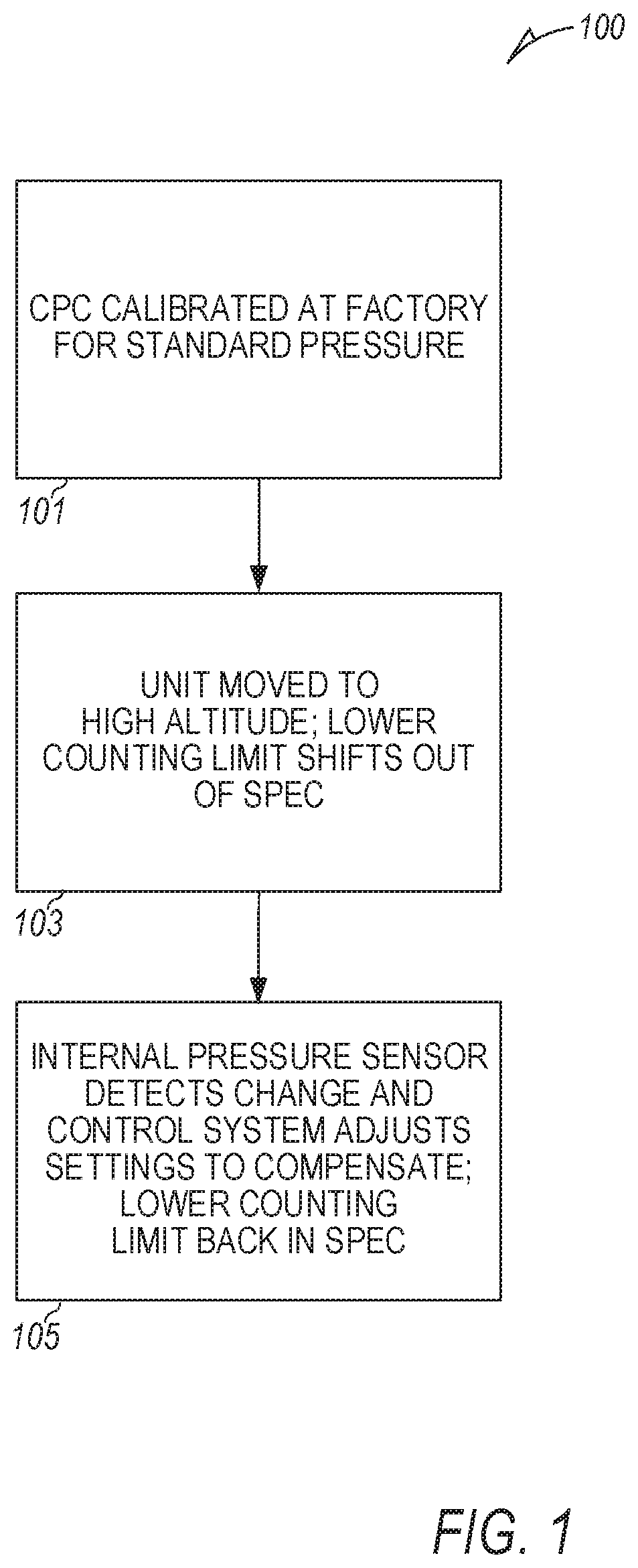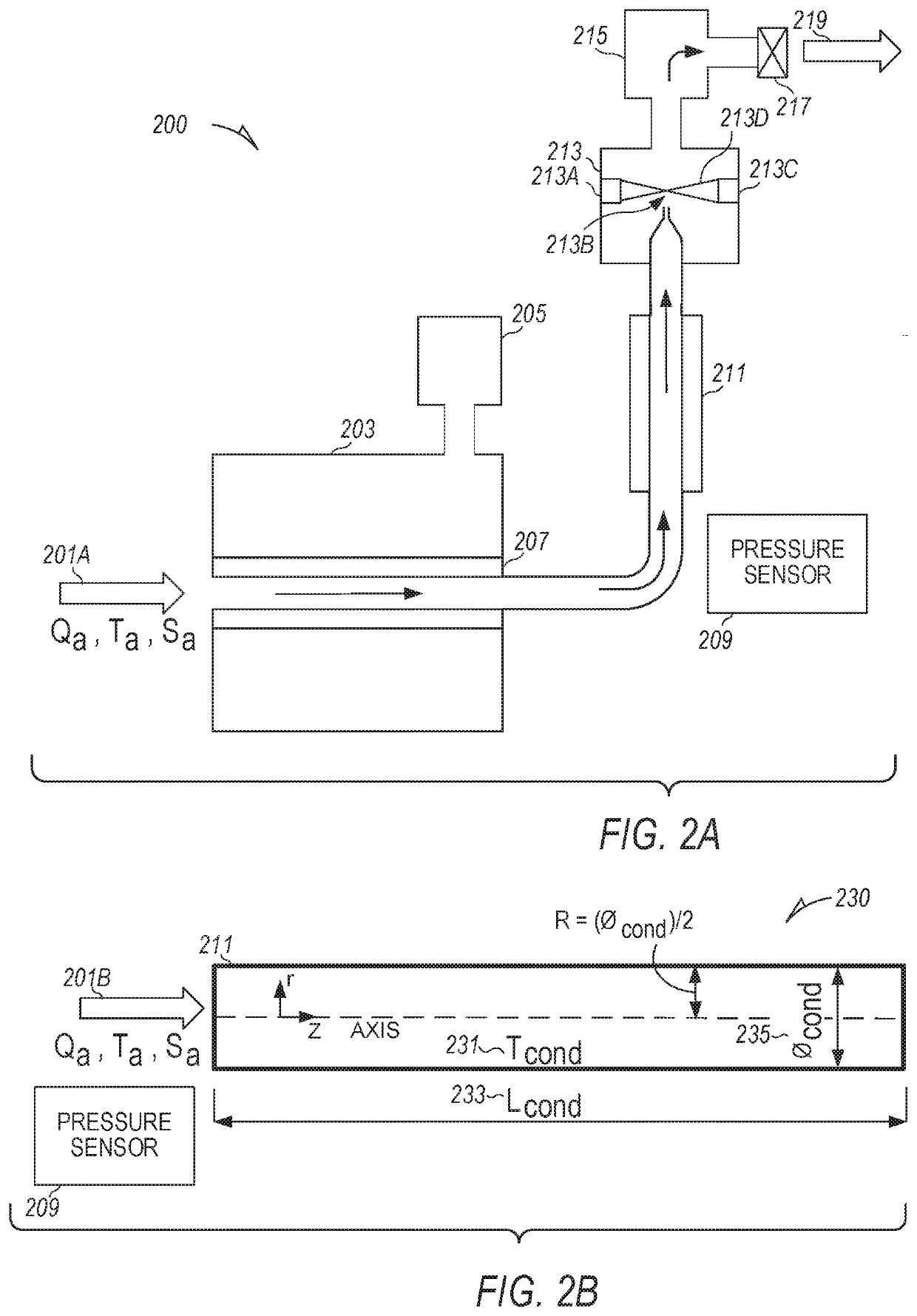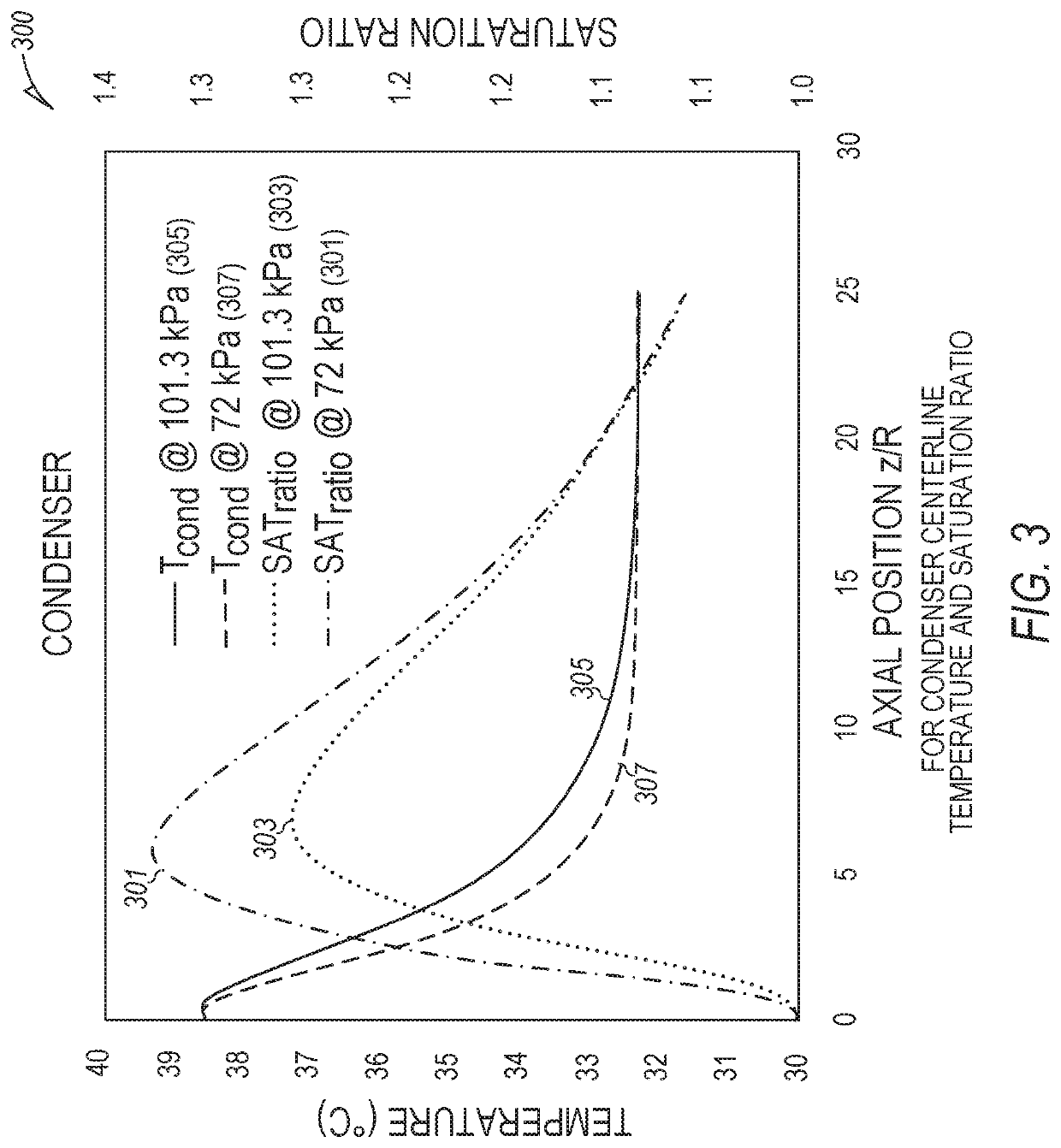Condensation particle counter efficiency compensation for altitude
a technology of efficiency compensation and condensation particle, applied in the direction of instruments, nanoparticle analysis, suspensions, etc., can solve the problems of high uncertainties in cpc count, complex instrumentation, and easy failure of condensation particle counters, etc., to achieve the effect of improving the efficiency of measurement system and avoiding failure of other good measurement systems
- Summary
- Abstract
- Description
- Claims
- Application Information
AI Technical Summary
Benefits of technology
Problems solved by technology
Method used
Image
Examples
Embodiment Construction
[0014]The science of condensation particle counters, and the complexity of the instrumentation, lies with the technique to condense vapor onto the particles. When the vapor surrounding the particles reaches a specific degree of supersaturation, the vapor begins to condense on the particles. The magnitude of supersaturation determines the minimum detectable particle size of the CPC. Generally, the supersaturation profile within the instrument is tightly controlled. Techniques and mechanisms are disclosed to compensate for changes in particle count, at a given particle diameter, for changes in sampled absolute-pressure (e.g., a value of absolute pressure of an aerosol stream through the CPC) at which the measurements are taken.
[0015]Since a CPC is normally factory-calibrated at a certain pressure (typically at an absolute pressure of 101.3 kPa), techniques and mechanisms disclosed here allow a CPC to be used at various values of absolute pressure with minimal measurement uncertainties...
PUM
 Login to View More
Login to View More Abstract
Description
Claims
Application Information
 Login to View More
Login to View More - R&D
- Intellectual Property
- Life Sciences
- Materials
- Tech Scout
- Unparalleled Data Quality
- Higher Quality Content
- 60% Fewer Hallucinations
Browse by: Latest US Patents, China's latest patents, Technical Efficacy Thesaurus, Application Domain, Technology Topic, Popular Technical Reports.
© 2025 PatSnap. All rights reserved.Legal|Privacy policy|Modern Slavery Act Transparency Statement|Sitemap|About US| Contact US: help@patsnap.com



